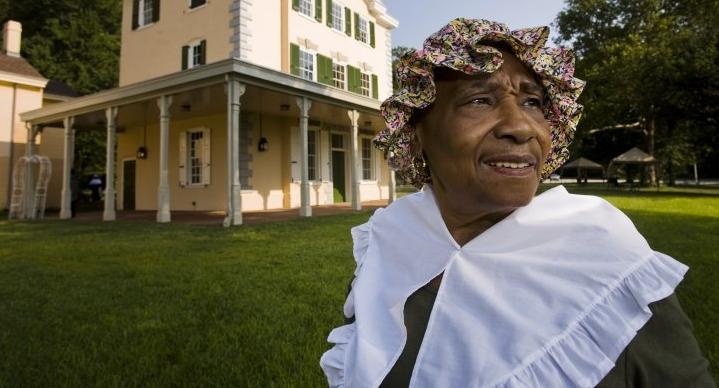Philadelphia, PA - Philly's African-American History in Philadelphia is celebrated and highlighted annually in the United States during February, designated as Black History Month. Although previously marginalized, African-American history has gained ground in school and university curricula and gained wider scholarly attention since the late 20th century. Listed Below are a few of Philadelphia's African-American museums & exhibits.
This year, the Historic District’s African American Museum in Philadelphia celebrates its 40th anniversary. The groundbreaking institution hosts two temporary exhibitions through April 2, 2017. Shawn Theodore’s Church of Broken Pieces explores the translocation of black America through photography. Dawoud Bey’s Harlem, USA resurrects the photographer’s iconic 1979 portraits of residents of one of the country’s most diverse neighborhoods. The district is also home to the 201-year-old founding church of the two-million-strong African Methodist Episcopal church, Mother Bethel A.M.E. And, it’s the place to discover African-American religious, cultural and social traditions, historical landmarks and exhibitions and more:
Museums:
- The African American Museum in Philadelphia, founded in 1976,is the first institution built by a major U.S. city to preserve, interpret and exhibit the heritage and culture of African-Americans. The museum takes a fresh and bold look at the stories of African-Americans and their role in the founding of the nation through the core exhibit Audacious Freedom. Other exhibitions and programs reveal the history, stories and cultures of those of African descent throughout the African diaspora. 701 Arch Street, (215) 574-0380, aampmuseum.org
- Independence Seaport Museum permanentexhibition Tides of Freedom: African Presence on the Delaware River uses the city’s eastern river to uncover the African experience in Philadelphia. First-person accounts and artifacts from the museum’s collection recount 300 years from enslavement, emancipation, Jim Crow through the Civil Rights movement. Penn’s Landing, 211 S. Columbus Boulevard, (215) 413-8655, phillyseaport.org
- The Liberty Bellencourages visitors to uncover the connection between the bell and African-American history. Videos and interactive displays explain how the abolitionist movement adopted the object as a symbol of freedom based on the inscribed quote from Leviticus—“Proclaim liberty throughout all the land unto all the inhabitants thereof.” Beginning in the late 1800s, the Liberty Bell traveled around the country to expositions to help heal the divisions of the Civil War. It reminded Americans of earlier days when they worked together for independence. 5th & Market Streets, (215) 965-2305, nps.gov/inde
- The forthcoming Museum of the American Revolution (MoAR) will explore the personal stories of African-Americans, including that of William Lee, the valet whom George Washington enslaved and lived alongside throughout the war. The museum lets visitors climb aboard a privateer ship like the one on which James Forten, a 14-year-old free African-American volunteered and view a signed 1773 volume of Poems on Various Subjects by Phillis Wheatley, America’s first published black female poet. In addition, MoAR will offer historical tableaux that reimagine historical moments—such as a 1781 conversation between enslaved Virginians and a black Loyalist soldier—that were never captured with an artist’s brush. Opens April 19, 2017. 101 S. 3rd Street, (215) 253-6731, amrevmuseum.org
- TheThe National Constitution Center in Philadelphia uses hands-on activities to illustrate the contributions of notable African-Americans; delves into pivotal Supreme Court cases, such as Dred Scott v. Sanford and Brown v. Board of Education; and explores the constitutional amendments that established rights for all citizens. NCC permanently displays an extremely rare copy of the Emancipation Proclamation signed by President Abraham Lincoln in the Civil War alcove, which examines the turning-point year of 1863. A more modern highlight: the original, signed copy of Barack Obama’s “A More Perfect Union” speech, which he delivered in 2008 at the National Constitution Center. 525 Arch Street, (215) 409-6700, constitutioncenter.
org - The National Liberty Museum presents the enduring story of liberty, both in history and today. The Heroes From Around the World gallery spotlights notable people from all walks of life and time periods who protected and advanced freedom—including well-known figures such as Nelson Mandela and lesser-known people like Gail Gibson, a New Orleans nurse whose bravery helped save lives during Hurricane Katrina. The Live Like A Hero gallery showcases teachers, students, police officers, firefighters and other ordinary citizens who use their voices and talents to advocate for positive change. 321 Chestnut Street, (215) 925-2800, libertymuseum.org
- The President’s House Philadelphia: Freedom and Slavery in the Making of a New Nation marks thestructural fragments of the residences of Presidents Washington and Adams. This is the site where the country’s first president enslaved nine Africans, including Oney “Ona” Judge, who escaped to freedom, despite Washington’s efforts to capture her. The open-air Independence National Historical Park site, located just steps from the Liberty Bell Center, invites people to learn about the events that transpired through illustrated glass panels and video re-enactments, and then partake in silent reflection. 6th & Market Streets, (215) 965-2305, nps.gov/inde
- Washington Square Philadelphia, one of city planner William Penn’s five original green urban spaces, was once known as Philadelphia’s own Congo Square. A wayside in the city-block-size park describes activities of three centuries ago, when freed and enslaved African-Americans would gather at the then potter’s field during holidays and fairs to dance and celebrate the traditions of their homelands. 6th Street between Walnut & Locust Streets, nsp.gov/inde
Also see...
- AME Church Bicentennial Spotlights Philly's African-American History
- Philadelphia's African-American Historic Homes
- Philly's African-American History in Philadelphia


